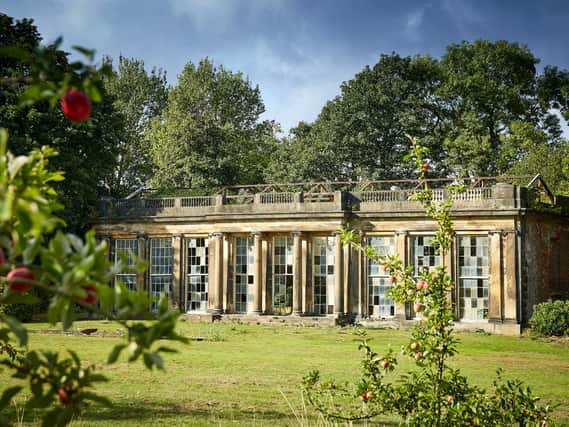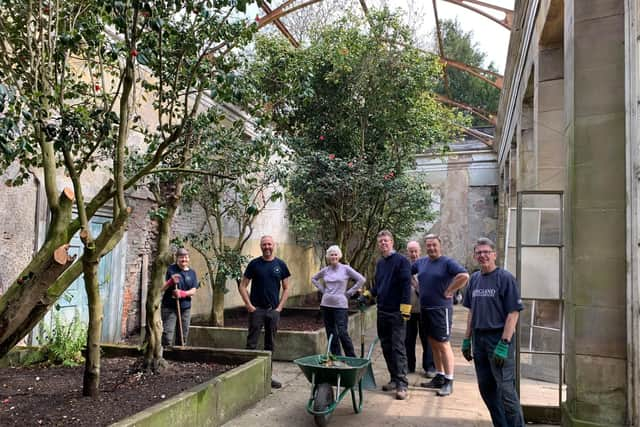Incredibly rare plants discovered at Yorkshire stately home after being forgotten for decades


That was the analogy invoked by a horticultural expert when she laid eyes on a collection of 200-year-old plants that nobody knew were still alive.
Nineteen rare camellias imported from their native China to Wentworth Woodhouse, the Grade I-listed stately home near Rotherham, in the early 1800s will take centre stage after being re-discovered during garden clearance work.
Advertisement
Hide AdAdvertisement
Hide AdWentworth Woodhouse's restored secret gardens are now open to the publicStaff were amazed when they entered the derelict Camellia House, which no longer has a roof, and found the 'rather leggy' plants still thriving despite decades of neglect.


Ironically, the exposure to the elements may have actually helped the camellias to survive, as they love damp, earthy conditions.
An expert was called to Yorkshire from Chiswick House in London, which also has a collection of Georgian-era camellias, and when Geraldine King walked into the building - which was originally a menagerie to house exotic animals kept as pets by the Marquess of Rockingham - she gasped at the sight before her.
She likened the find to stumbling across a first edition of Charlotte Bronte's novel Wuthering Heights and believes they are some of the most important in the western world, as well as among the first 'generation' to have been brought to Britain from Asia.
Advertisement
Hide AdAdvertisement
Hide AdDespite plans to convert the Camellia House into a garden cafe, visitor centre and events venue, the camellias will remain and be preserved - inspired by Chiswick House, where weddings are held around them.
Nobody knows exactly when the camellias arrived at Wentworth, the ancestral seat of the Earls Fitzwilliam, but they reflect a trend among the 18th-century aristocracy to scour the globe for exotic specimens to fill the gardens of their country houses.
They remained inside their crumbling glasshouse after the Fitzwilliams rented the mansion out after World War Two, when it became a ladies' teacher training college, and little attention was paid to them when the house subsequently passed into new ownership. They have never been seen by the general public.
This is the staggering cost of restoring Wentworth Woodhouse for the nationIt was only when the Wentworth Woodhouse Preservation Trust bought the property in 2017 with the aim of restoring it that major surveys were undertaken of the buildings and grounds.
Advertisement
Hide AdAdvertisement
Hide AdHead gardener Scott Jamieson and his team explored the Camellia House - which had previously been unsafe to enter - and found the plants still intact while attempting to clear brambles.
Geraldine will return to Wentworth to give a talk about the collection's significance on November 14, as part of Wentworth's autumn/winter lecture series.
“When I walked into Wentworth’s Camellia House and saw what a treasure the Trust had without realising it, I almost fell over with shock,” she said.
“So far we have identified three historic varieties and the most precious is ‘Alba Plena’, one of the first varieties to be introduced into Europe in 1792.
Advertisement
Hide AdAdvertisement
Hide Ad“Its trunk is 72cm in circumference, as wide as a tree and larger than that of the oldest we have at Chiswick House, which is thought to be from the 1820s."
She will also be consulted when development work on the Camellia House begins.
“Chiswick has been where Wentworth Woodhouse is now. Some 20 years ago our glasshouse was to become a wedding venue and all 32 camellias, which were in a poor state, were to be removed.
“Fortunately they called in the head gardener from Chatsworth, who pointed out how rare the plants were. Now beautiful weddings are held around our camellias.”
Advertisement
Hide AdAdvertisement
Hide AdThe historic plants will be nurtured carefully, and will also be bolstered with new specimens.
Cuttings are already being propagated at Chiswick and, if successful, will return, some 30cm tall, to South Yorkshire in four years’ time.
Meet the gardeners who look after the grounds of Yorkshire's stately homesMeanwhile next spring, as the camellias bloom, the International Camellia Society will visit Wentworth Woodhouse to identify more species.
“There are now 300,000 varieties of camellia around the world. But in 1802 the British had a choice of only four. We have these at Chiswick House and are keen to find out if Wentworth has too.”
Tickets for Geraldine King’s 6-8pm lecture on November 14 are £20. Book on 01226 351161 or at [email protected]